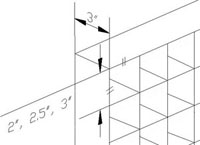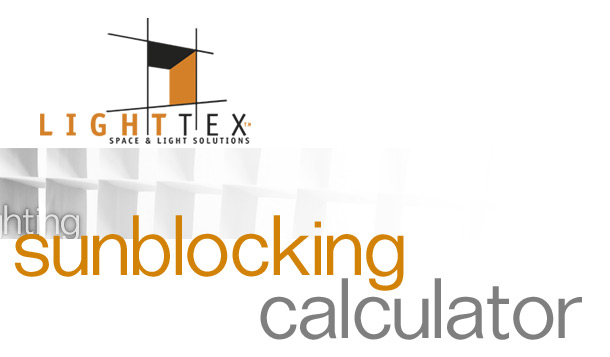
 |
 |
|
| Size of Blind/Louver | Size of Lighttex |
 |
|||||||
 |
|||||||
 |
|||||||
 |
|||||||
 |
|||||||
|
Blocking of direct sunlight by Lighttex is determined from simple geometry (see the diagram below). When the Lighttex material directly faces the sun, there is no blocking. As the angle between the sun direction and the material increases, so does the amount of blocking. The angle at which full (100%) blocking occurs depends on the cell depth and width.
Ten fixed window orientations and three different window coverings with comparative sizes including Lighttex panel are estimated in Eggcalc. The solar position JavaScript routines used in Eggcalc come from Solar Position Calculator, by Surface Radiation Research Branch, National Oceanic & Atmospheric Administration, US Department of Commerce. These routines are based on equations from Astronomical Algorithms, by Jean Meeus. The sunrise and sunset results have been verified to be accurate to within a minute for locations between +/- 72° latitude, and within 10 minutes outside of those latitudes. Simple mathematical geometry is applied to calculate the ratio of direct sun blocked shadow area over the whole area by which direct sun goes through. Note that computer simulation results can be different from actual due in part to:
Lighttex Canada Inc. assumes no responsibility for the use or suitability of this software. The software is provided "as is" without warranty of any kind, either express or implied, including, but not limited to the implied warranties of the merchantability and fitness for a particular purpose. The entire risk as to the quality and performance of the software is with the user. Lighttex Canada Inc. does not warrant that the functions contained in this software will meet user requirements, or that the operation of the program will be ininterrupted or error free. © 2005 Lighttex Canada, Inc. |
|||||||